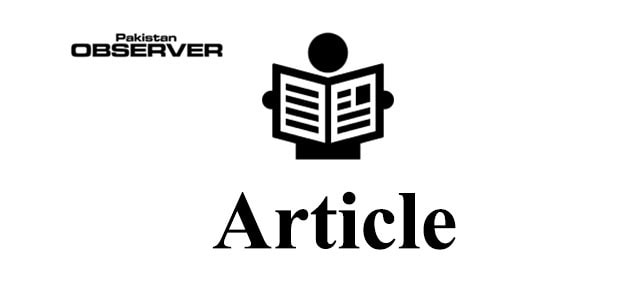Maritime challenges and opportunities
PAKISTAN’S maritime strategy is a component of the National Grand Strategy and covers a wide range of activities and interests in the maritime arena.
It deals with the elements of national power that are linked to national interests at sea, including diplomacy, safety, and security of its commerce at sea, fishing, exploitation, conversation, regulation, defense of Exclusive Economic Zones, and all that encompasses the above the seas, on the seas, and under the seas.
Sea means wealth, all big cities of the world are located near the sea like New York, Karachi, Tokyo, Istanbul, etc.
The advanced countries realized the importance of the sea, dominates the world seas, and became superpowers.
It’s the maritime power that makes a country economically prosperous and gives financial strength to support a big military.
Due to continental policies, Pakistan could not achieve a lot from the sea.
We could not utilize the ocean resources, underutilization of ports, fishing, ship construction, ship recycling, etc.
The Indian Ocean is the third largest ocean with about 20% water in the world, more than 2.6 billion or 40% of the world’s population, and vital sea lanes crisscross through the Indian Ocean.
The Middle East has 65% world’s oil reserves and provides 40% of the oil supply.80 % of the world trade passes through the Indian Ocean and it’s worth trade of US$1 trillion.
On average, 100,000 ships pass through the Indian Ocean annually.The Indian Ocean has seven world’s most important chokepoints (like the Strait of Hormoz, Strait of Malacca, etc.), and any disruption in the choke points will cripple the world economies.
There has been a gradual expansion of regional and extra-regional maritime forces and their capabilities in the region.
Pakistan has a coastline of 1001 km with three ports, Karachi Port Trust (KPT), Port Qasim Authority (PQA) in proximity, and Gwadar Port Authority (it is not fully functional) 472 km in a westerly direction.
Due to CPEC Gwadar port is the center of attention and the enemy of Pakistan is trying their best to make it a failure, but CPEC will be a success which will change the dynamics of the entire region.
The three ports are considered sufficient to handle the present and future sea trade of Pakistan, transit trade of adjoining landlocked countries, and emerging transshipment requirements.
Pakistan’s National Security is dependent upon its Maritime Security.Pakistan has an Exclusive Economic Zone of 200 Nautical Mile (NM) and another 150 NM Continental Shelf which is under utilized.
About 91% of trade and 100% of oil are imported from the sea.We discuss CPEC not realizing the importance of the maritime component of the CPEC.
Pakistan heavily depends on its imports/exports by sea.This demands a corresponding increase in its merchant marine and security apparatus.
Pakistan National Shipping Corporation has only 11ships, about 10% of total sea trade uses National Ships which is alarming.
When CPEC is fully operational PNSC share will be further reduced and at the time of war or tension Pakistan will be heavily dependent upon foreign ships, and the freight charges will be increased phenomenally.
An estimated US$ 5 bn in foreign exchange was spent in 2021 on sea freight charges only, whereas a new medium size container ship/ oil tanker will cost US$ 50 million.
We are losing a precious amount of foreign exchange and are dependent upon foreign carriers for our trade.
There is a dire need of making plans to overcome the weakness of dependence on foreign flag carriers and enhance Pakistan’s Naval capabilities to ensure Sea Lanes of Communications are always protected.
KPT and PQA are the major ports, in 2021, Pakistani ports handled 110 million tons of cargo, less than 2% of cargo is transported by rail, and the rest by road, which makes it more expensive.
The share of the railway is to be increased to make it more cost-effective.
Gwadar port has a great strategic location and potential to handle national, transit, andtransshipment cargo, the sad reality is that we have not been able to make this port functional even from very modest standards.
For this port to be fully operational and optimally used to its potential, the impediments of lack of dredging, hinterland connectivity, improved infrastructure along with power and telecom services, required FBR SROs need to be addressed on a war footing.
Karachi Shipyard and Engineering Works have a comprehensive setup for the repair and development of Naval and Commercial vessels with two Dry Docks available which can take vessels up to 26,000 DWT.
The 2nd Shipyard for Gwadar is essential for Gwadar Port Operationalization.When completed, then there is a huge potential for shipbuilding and repair yards in Pakistan as it sits next to the Persian Gulf.
Pakistan has all the resources to improve its economic condition by adopting the right and timely policies in the maritime sector which will be beneficial for us.
—The writer is contributing columnist, based in Karachi










